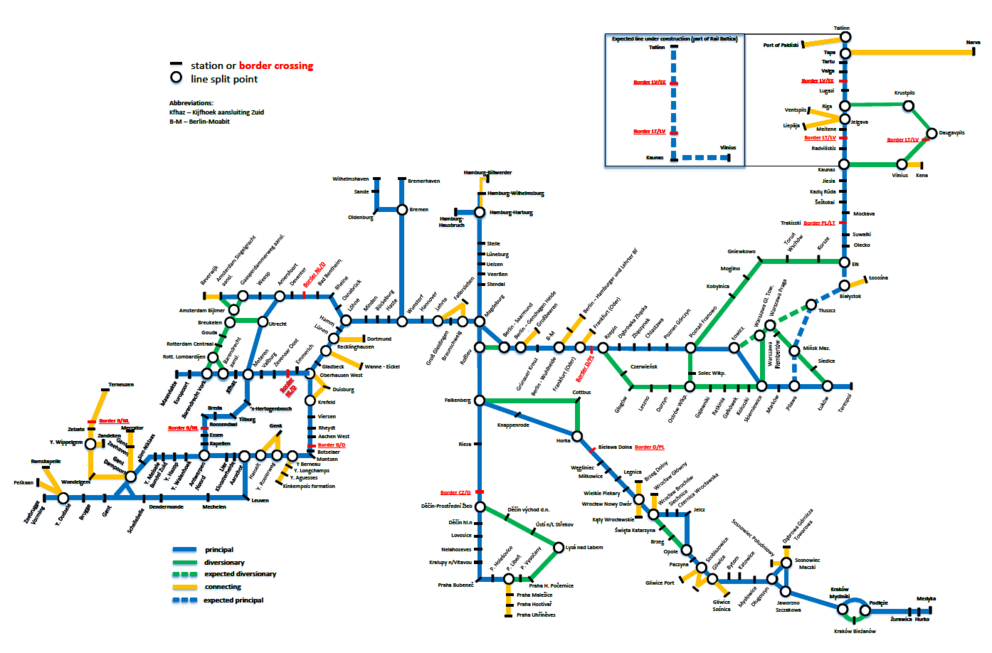Corridor
Rail Freight Corridor North Sea-Baltic – Your East West Rail Bridge across Europe
Rail Freight Corridor North Sea – Baltic, formerly known as Rail Freight Corridor No. 8, includes more than 9600 km of railway lines which span over eight countries and connects the most important North Sea ports with Central Europe and the Baltic States providing a rail bridge between eastern and western Europe.
Rail Freight Corridor North Sea – Baltic belongs to corridors with the greatest potential for growth in tonnage of shipped goods and tonnage of transported goods over the shipment distance on international journeys. Further integration between EU Member States makes the Corridor to be best fit for purpose of strengthening the economic bonds between countries of the region by providing high capacity transport service. The Corridor also fulfils the requirements of modern transport policies promoted by European Commission, in particular “Shift to Rail” for transported goods. It is unquestionable that transport of freight in the framework of Rail Freight Corridors meets the recommendations for transport of tomorrow and requirements for support to development of reliable, safe and environmentally friendly rail guided means of transport.
Strategic location of the Corridor at the eastern frontier of European Union exposed to Eastern Europe, Central Asia and beyond gives it a pivotal role in the coordination of efforts, which contribute to development of rail transport routes serving as an extension to already existing network of eleven Rail Freight Corridors. Rail Freight Corridor North Sea – Baltic is the meeting point of two different railway systems and its members already offer capabilities and experience in efficient handling of the interface between standard and broad gauge railways.
Below jumping jack illustrates schematic outline of the Rail Freight Corridor North Sea – Baltic (download pdf file).
